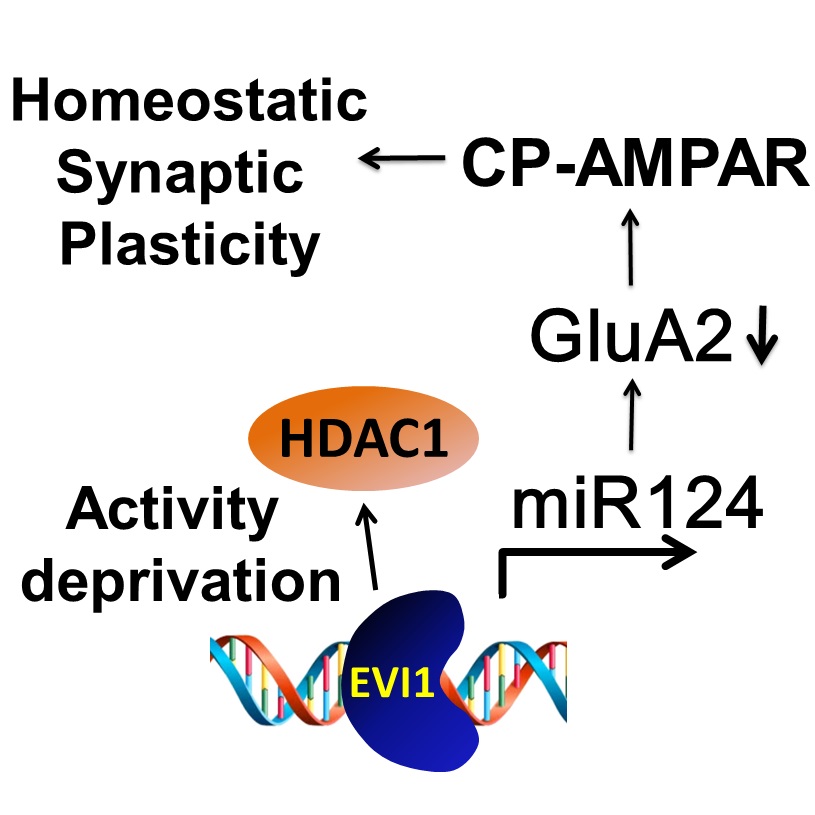 Homeostatic
Plasticity
Homeostatic
Plasticity

Changes in Synaptic Strength are Key to Neuronal Function
During development and normal brain function, changes in synaptic strength driven by Hebbian plasticity, including long-term potentiation (LTP) and long-term depression (LTD), may lead to neurons with either saturated activity or complete silence. To circumvent this potential problem, neurons have been found to sense their overall activity level and adjust it via a negative-feedback mechanism known as homeostatic plasticity, through which neurons can restore their function at a set-point level when challenged by external or internal perturbations and thus maintain neuronal or network stability.
When network activity is chronically suppressed, homeostatic response leads to an increase in synaptic strength across all affected synapses, where one of the major cellular mechanisms is to alter receptor expression at the postsynaptic domain. It has been characterized that the homeostatic enhancement in synaptic activity is proportional to previous synaptic activity levels (termed synaptic scaling), thereby maintaining relative weights among synapses.
 ResearchGate
ResearchGate Google Scholar
Google Scholar Boston University
Boston University